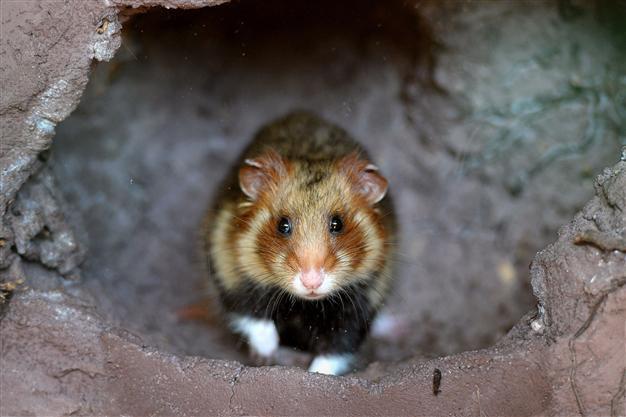France launches action plan to save endangered hamster
STRASBOURG - Agence France-Presse

A picture taken on June 7, 2011 in Hunawihr, eastern France, in a breeding center dedicated to the reintroduction of the specimen, shows a Great Hamster of Alsace. AFP Photo
Authorities in the French region of Alsace have launched an action plan to save a hamster facing extinction, more than two years after Europe's top court rapped Paris for neglecting the little rodent.The five-year project will see farmers in the eastern region implement measures to try to encourage the reproduction of the Great Hamster of Alsace, which can grow to 25 centimetres (10 inches) long, has a brown and white face, a black belly, white paws and little round ears.
It aims to raise the population of the creature to around 1,500 from 500 to 1,000 currently.
As part of the three-million-euro ($4.2 million) project announced on Monday by Alsace's regional council, farmers have pledged to grow plants or grains that the rodent likes -- such as wheat or alfalfa -- on parts of their fields.
An action plan for the hamster had been put in place in 2007, but the European Court of Justice ruled in 2011 that France was still not doing enough to protect the furball, which hibernates for six months and spends the vast majority of its life alone.
The hamster has been protected legally since 1993 but its numbers fell from 1,167 in 2001 to as few as 161 in 2007, although they have since gone up slightly.
The preferred grazing of the creature -- forage crops such as alfalfa -- have largely been replaced by the more profitable maize, which it does not like.
Farmers will therefore try planting a mix of maize and alfalfa, or leaving strips of plants in between each line of maize.
"The aim is to find innovative... practices to preserve the animal without harming farmers' activities," the regional council said in a statement.
Rampant urbanisation has also contributed to eroding the rodent's population, and the hamster currently lives in just 14 zones in Alsace criss-crossed by busy thoroughfares.
















